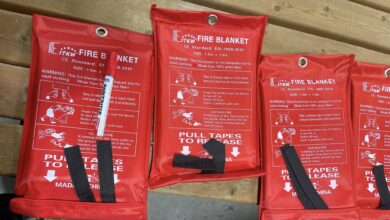
Recycling Agricultural Plastics
Cleanfarms is a not-for-profit, industry-funded stewardship organization. The programs that Cleanfarms deliver help farmers responsibly manage the waste products they generate on the farm. Recycling programs include grain and silage bags, seed bags and large tote bags, pesticide containers up to 23L, chemical totes and drums, twine and unwanted pesticide and livestock medications.
1. Grain and Silage Bags
This recycling program offers producers, who use grain or silage bags, nearly 50 collection sites across the province to return their bags to.
Steps to recycling Grain Bags:
- Shake: remove excess debris (grain, ice, dirt etc.);
- Roll: Prepare grain bags by rolling and tying with twine; and
- Return: Please contact a collection site before dropping off material.
If you don’t have a bag roller, contact your local collection site. Grain bag rollers should be available for use, free of charge, at most sites.
Some sites, RMs and/or watershed groups, offer value-added services like on-farm pickup, rolling and baling. If you have a very high volume of grain bags (50+), Cleanfarms will work with you to coordinate a pickup.
2. Seed Bags and Large Tote Bags
Through this program producers can recycle their seed and large tote bags at most seed dealers or agriculture retailers in the province.
Steps to recycling seed and tote bags:
- Get your recycling bag: Pick up a free plastic recycling bag from your seed dealer or agriculture retailer;
- Empty: Ensure bags are empty of debris;
- Fold and Place: Place small empty bags (up to 100 kg) in the plastic recycling bag and tie at the end with rope or twine. Tie large, bulk (greater than 100 kg, usually 500 kg or 1,000 kg) bags in bundles of six; and
- Return: Return to your local collection site collection site maps.
3. Containers up to 23L
Producers can recycle their pesticide and fertilizer containers at over 300 collection sites across the province, many collection sites are fertilizer and agriculture retailer locations.
Steps to recycling containers:
- Rinse: Triple or pressure rinse to ensure no product is wasted;
- Remove: Remove caps and booklets (place in garbage); leave the glued-on label. Remove metal handle from fertilizer pails; and
- Return: Return to your local collection site collection site maps.
4. Twine
Through this pilot project, Saskatchewan growers that use twine are encouraged to bring it back for recycling at more than 30 existing grain bag recycling collection sites located at landfills or local businesses throughout the province.
Steps to recycle twine:
- Shake: Remove as much debris, snow or ice as possible. Excessively dirty twine may not be accepted;
- Bag: Place loose twine in a clear collection bag and secure bag closed with twine or a zip tie; and
- Return: Return to your local twine pilot collection site.
Your local agri-environmental specialist can answer questions regarding agriculture plastics recycling, help you locate your nearest collection site and in partnership with Cleanfarms, help you organize collection days if need be. Call the Agriculture Knowledge Centre at 1-866-457-2377 to get connected to a specialist near you. For information on these programs, their collection sites and others, please visit the Cleanfarms website.








































